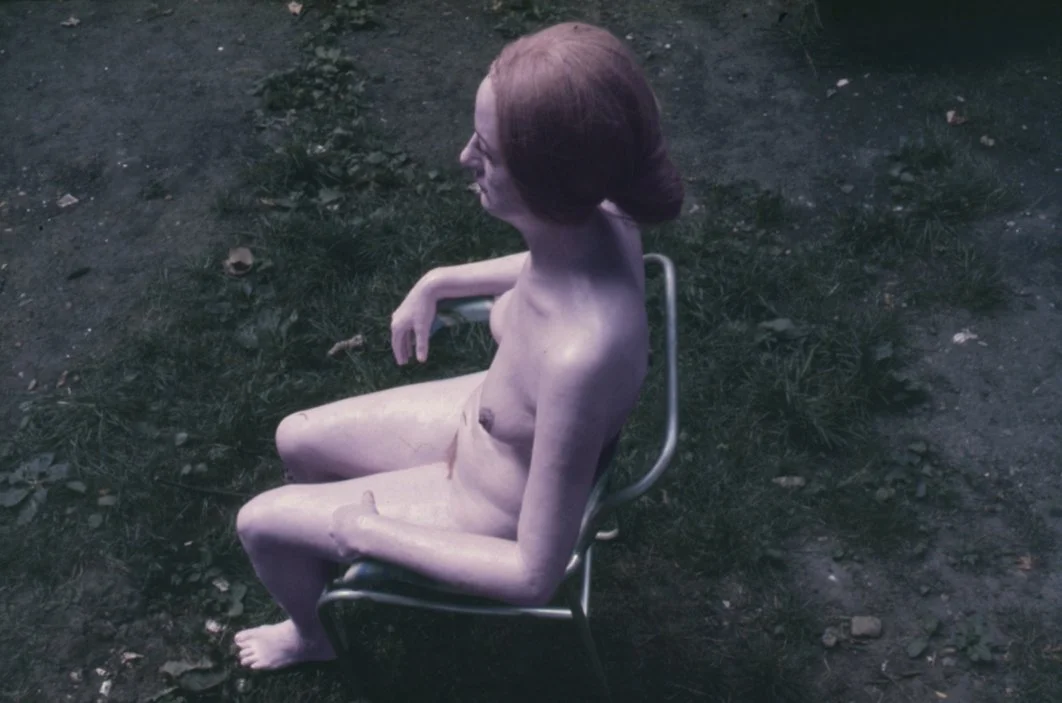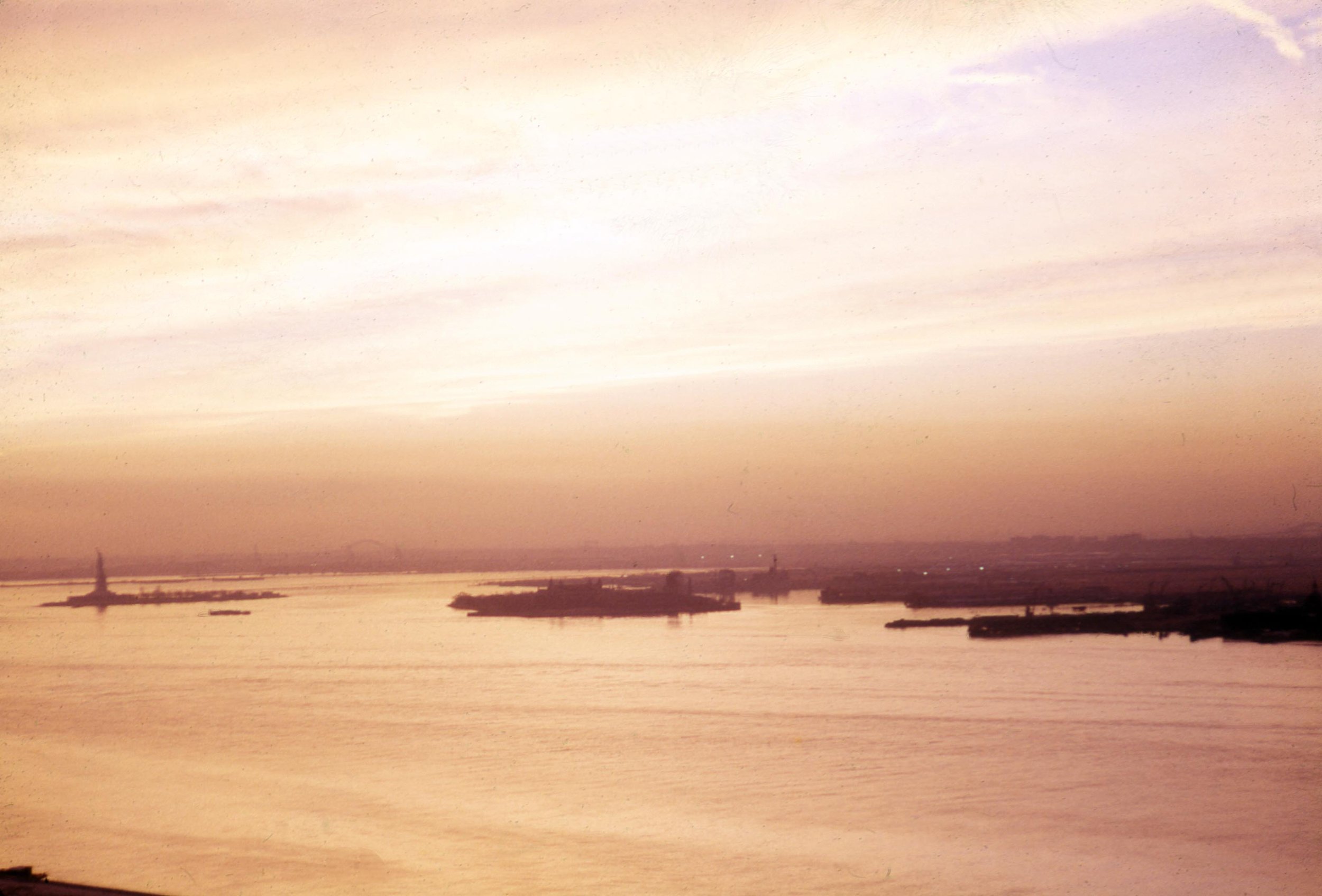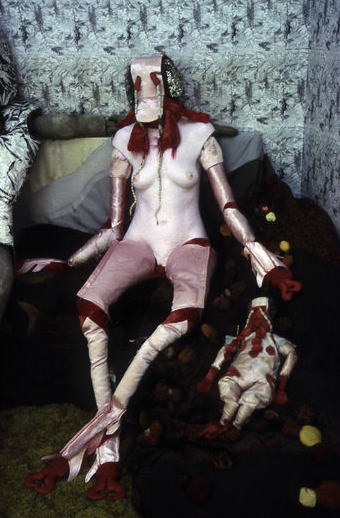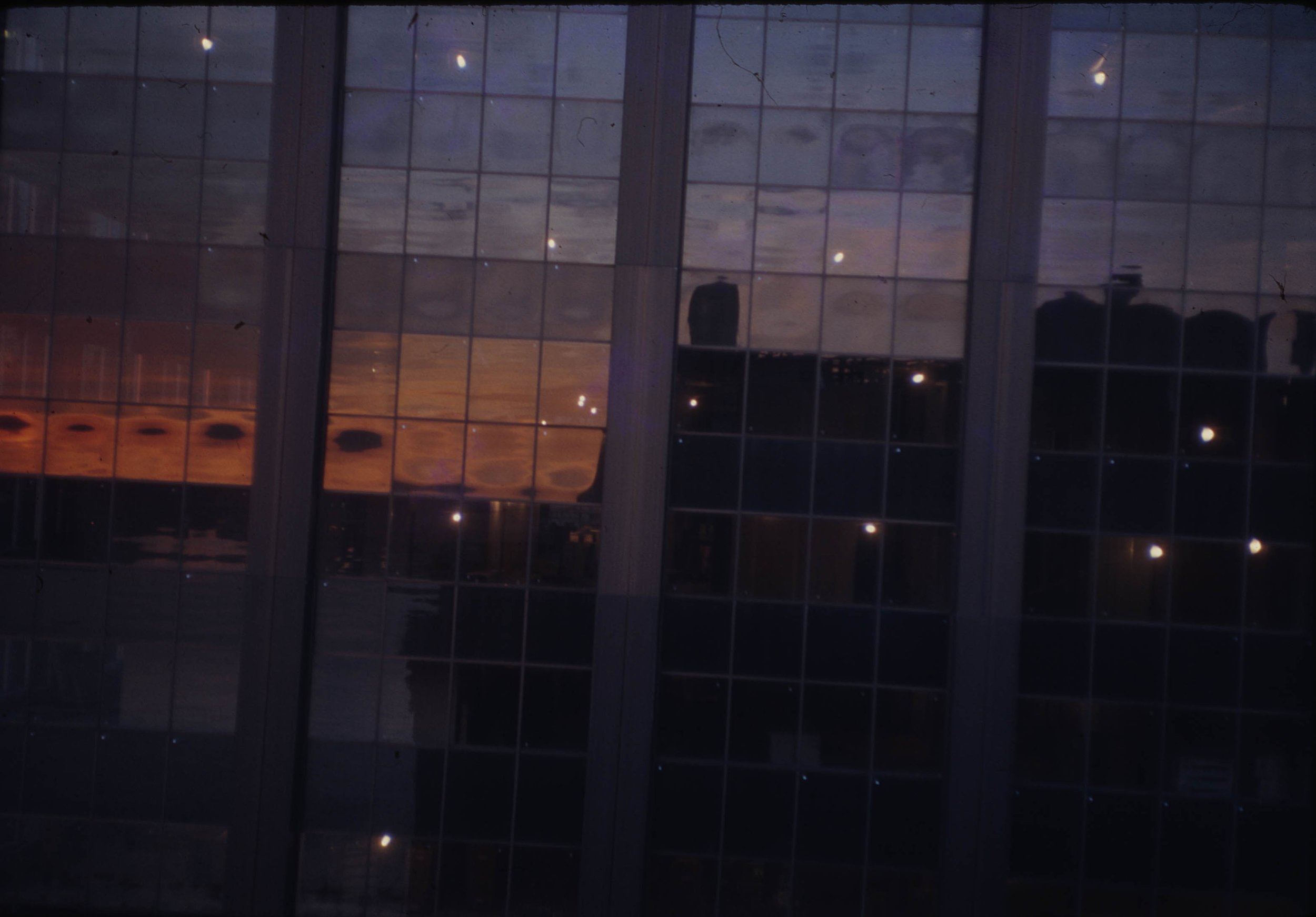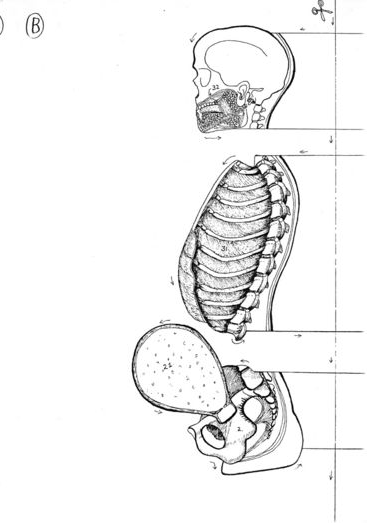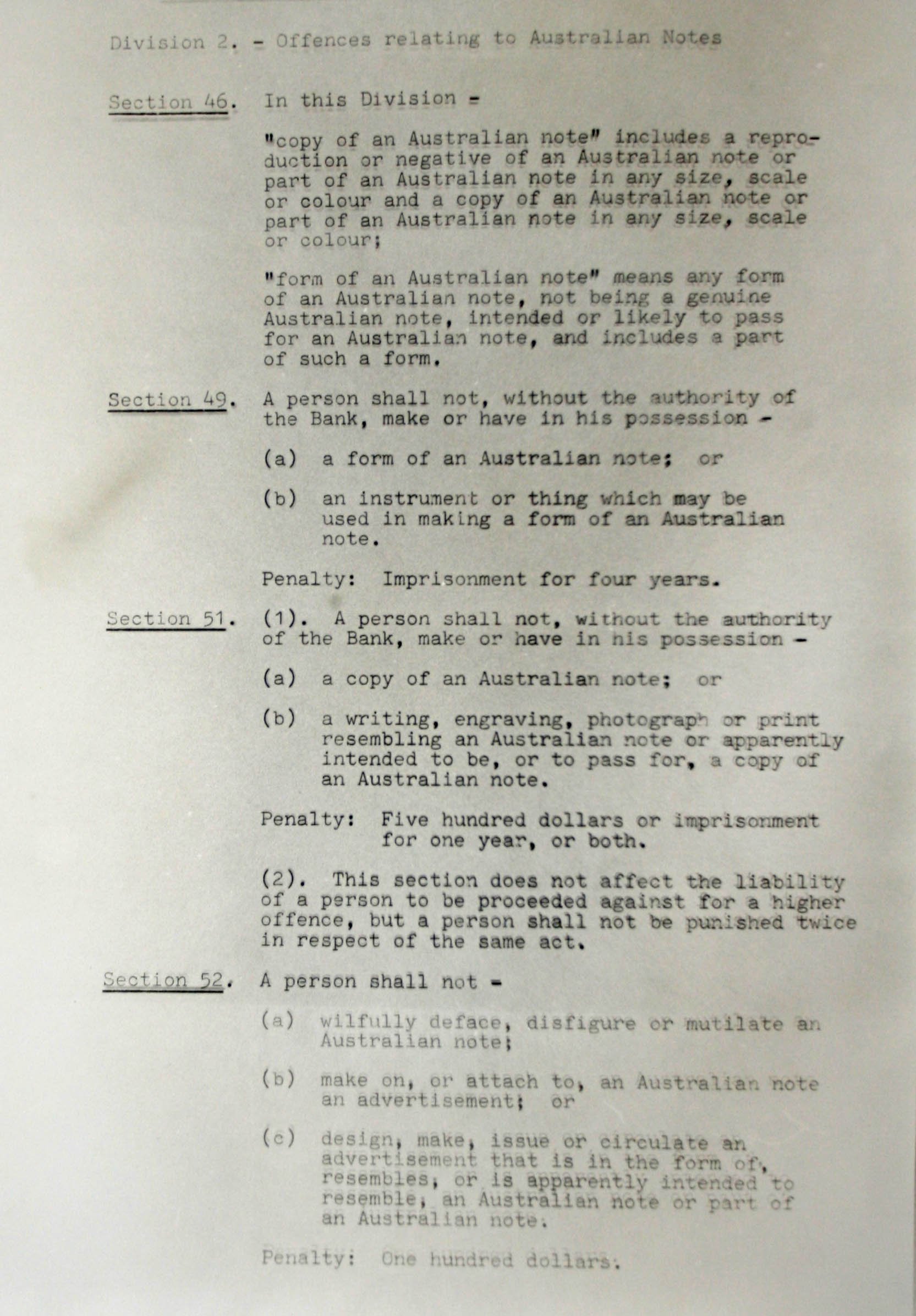BLONDIE, 1972 After completing Art School I went straight to London. The first sculpture made there was a pink self portrait titled Blondie, a reference to women’s identity politics.
C20th MYTHOLOGICAL BEASTS: AT HOME WITH THE LOCUST PEOPLE, 1975
The Locust People Paintings
Itchy Feet, 1975. Acrylic on canvas, collage. AGNSW collection.
At Home with the Locust People, 1974. Acrylic on canvas. Private collection.
The Locust People’s Swimming Pool, 1974, New York.
C20th Mythological Beasts: At Home with the Locust People, installation 1975
The family are watching polluted sunsets on TV in their lounge room. The video fills the space with haunting city sounds. The TV was originally angled to lure viewers into the installation. The lounge room’s decor is based on natural motifs - we LOVE nature The male is a grey puppet, his locust body has a camouflage pattern. The female and baby girl are dolls. The sunsets were photographed by Bonita Ely looking out across the Hudson River to the State of Liberty, Stanton Island, from West Street, New York City.
Sunset Video: sound, Moog synthesiser, composer and performer, Mark Freedman; camera operator, Sue Ford; director, Bonita Ely.
One of eighty photographs of polluted sunsets looking across the Hudson River from the artist’s residence and studio on building’s top floor, West Street, New York. The photographs are the subject of Sunset Video that the Locust People are watching in their lounge room.
The couch design is an interpretation of the landscape water colour painting, Autumn, Upstate New York, hanging on the wall. The curved mirror reflects viewers.
First exhibited in West Street Gallery, North Sydney, viewers were lured into the space of the artwork to watch Sunset Video with the Locust People. In the 1970s, installations were referred to as ‘environmental’ because the artworks were off the white wall and pedestals, creating their own space, ie/ environment.
Mother & daughter: C20th Mythological Beasts: at Home with the Locust Family, 1976. Mother is like a pink doll with soft arms, legs & head, and a cast torso; her daughter is a soft toy.
Father: C20th Mythological Beasts: at Home with the Locust Family, 1976. Father is a grey puppet with movable arms & legs. His torso and head have a similar pattern to the wallpaper - he is camouflaged. He has radio antennas.
Autumn, Up State New York, 1974, the watercolour hanging in the wall in the Locust People installation.
108 REFLECTIONS, 1975
The Grid Show, George Paton & Ewing Galleries, University of Melbourne. 108 Reflections, quilt.
The patchwork quilt is based on a sunset reflected on a skyscrapper’s windows, photographed in New York. Tied to a mattress, suspended on a pulley system, the bed can be lowered to the floor to sleep in, or hung on the wall.
The sunset reflected on a skyscrapers windows behind Bonita Ely’s residence and studio on West Street, New York.
108 Reflections installed.
PORTRAIT OF THE ARTIST AS A YOUNG WOMAN, 1977.
Using anatomical diagrams of pregnancy to form a anatomical, diagramatic book, this artwork is a portrait of English Sculptor, Barbara Hepworth (1903 - 1975) who had triplets. Exhibited in the Women’s Postal Event, Institute of Contemporary Art, London, United Kingdom. The drawings were also published in Lip magazine.
The muscular system.
Portrait of the Artist as a Young Woman, 1977, showing the skeleton.
The triplets in her uterus.
She is imaging one of her sculptures, three forms on a bowl.
MONEY TREE SEED, 1977 with Margaret Bell. The Money Show, George Paton & Ewing Galleries, University of Melbourne.
Margaret and I wrote to the Reserve Bank of Australia to request damaged, unusable notes and coins to make an artwork for the Money Show.. We received a polite letter saying it was not possible.
Our letter and the reply were exhibited alongside the diagram below, with a money tree seed made of assembled dollar notes and coins.
Mt Feathertop Project, 1978
Exhibitions: 7th Mildura Sculpture Triennial, Mildura, Victoria; Also shown in Artspace, Melbourne, 1979. The drawings are sequenced to represent the panoramic view from the summit of Mount Feathertop in the Victorian Alps, depicting all four seasons.
Mount Feathertop – a Wilderness Area, 1978. Mediums: papier maché sculpture, wooden table, drawings, watercolours, slide show, maps, text.
Funded by the Visual Arts Board, Australian Council: Special Project Grant to research a pristine Australian landscape as a vehicle of culturally encoded significance.
